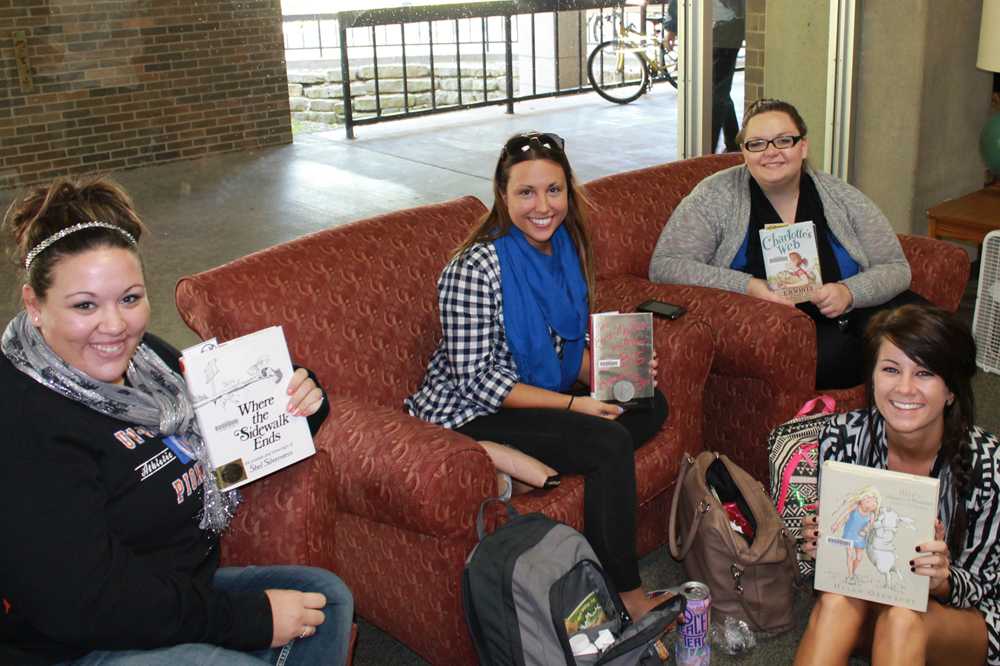his year’s Banned Books Week celebration had a higher turnout than years past at the University of Wisconsin-Platteville.
During the week of Sept. 22, students were encouraged to “get caught doing something dangerous” by taking pictures of themselves reading a banned book.
Sponsored by the American Library Association, this event is used as a way to inform students of the number of books banned, why their books are determined banned and who typically seeks to ban certain books.
Zora J. Sampson, Director of Archives and Museum in Karrmann Library and member of the board of the American Library Association, said the most important goal they want to achieve was to send a powerful message to students.
“We all have to speak up and say people have the right to read,” Sampson said.
Students who attended the celebration got to learn more about banned books, the process that goes into banning a book, and were shocked by just how many well-known titles are now banned.
Cassie Heusinkveld, an elementary education major, learned that the “Harry Potter” series, one of her favorite series growing up, is a banned book.
“We all read these when we were younger and it was no big deal,” Heusinkveld said.
Molly Reid, a general engineering major, discovered that a book from her childhood, “Bridge to Terabithia,” was also a banned book.
“It seems like they ban everything we love and (everything) that’s not boring,” Reid said.
She believes that the book was most likely banned because of the themes of magic, make-believe and the death of a child.
Melissa Ortiz, library administration assistant at Karrmann Library, is knowledgeable about the reasons behind book censorship and how the interest begins.
“Typically books are banned because a parent or patron finds the material offensive,” Ortiz said.
“Books have been banned due to the following reasons: offensive language, violence, having an occult theme or promoting the occult or Satanism, being unsuited for an age group, promoting homosexuality, racism, sexual educations, being anti-family or promoting a religious viewpoint and nudity,” Ortiz said.
An example of a banned book based upon homosexuality is the children’s book titled “King & King.” The story involves a prince whose parents are trying to find the perfect princess for him. The prince realizes that he does not like princesses and wants to find a prince instead.
Danielle Huffaker, an elementary education major and a student with Reading, Literacy and Literature II classes, said she thinks that this would be a really good book to read to children because it would help them understand and learn about homosexuality and answer some questions they may have.
Highly regarded titles, such as “Where the Sidewalk Ends,” “The Wizard of Oz,” “James and the Giant Peach,” “Harry Potter” and “Charlotte’s Web” are just a few that now appear on the banned books list.
Sampson said that she looked further into the reasononing behind the banning of “Charlotte’s Web,” and that the reason given was that the story presented unnatural depictions of animals, meaning that animals speak and act like humans.
Banned Books Week works to inspire people to speak up for their right to read.
“Our first amendment gives us the right to read,” Ortiz said. “I think that if we want to call ourselves a democratic nation, then we need to stand up and challenge anything which tries to take this right away, otherwise our rights are nothing more than ink on paper.”




